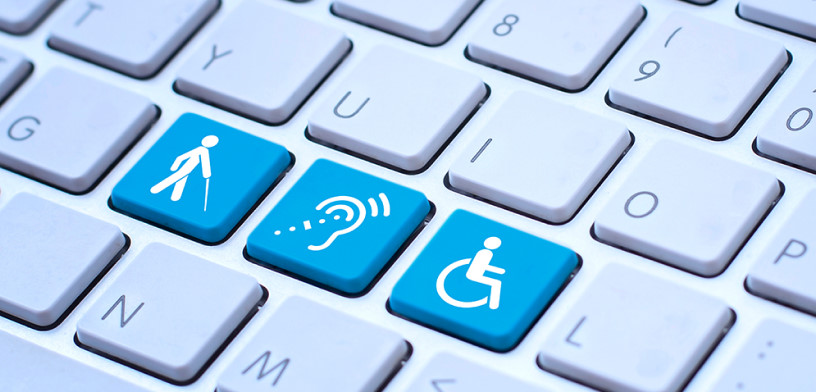Digital accessibility: What does WCAG compliant mean?
Written by William ElegeertJanuary 17 2025

Digital accessibility Is more relevant than ever in 2025. With the implementation of the European Accessibility Act (EAA), businesses are legally required to make their digital platforms accessible to everyone, including people with disabilities. This not only provides an opportunity to reach a wider audience but also strengthens your brand and improves the user experience.
In the Netherlands, approximately 35% of people live with a disability. That’s about 6 million people who may face challenges when visiting websites. These challenges can stem from disabilities such as deafness, visual impairments, dyslexia, or low literacy. By investing in digital accessibility, you make your website more inclusive and accessible to everyone. After all, everyone is welcome, right? Discover what you can start doing today to make your website future-proof.
What is digital accessibility?
Digital accessibility means that everyone—regardless of any limitations—has access to the information and functionalities of a website. This can be achieved, for example, by adding alt texts that describe images, allowing screen reader software to convey this information to visually impaired users. It ensures that no one is excluded and makes your platform accessible to a wider audience.
Since 2021, government agencies in the Netherlands have been required to make their digital platforms accessible. With the introduction of the European Accessibility Act (EAA) in June 2025, this obligation will also apply to businesses. This presents not only challenges but also opportunities to expand your reach, strengthen your brand, and meet legal standards. Start now, so you’re ready in time!

The benefits of making your website accessible
Making your website accessible not only has a positive societal impact but also delivers clear business advantages:
- Expand your reach
An accessible website allows you to reach more people, including those with disabilities. This means more potential customers and higher conversions. - Improve your search engine visibility (SEO)
What benefits your users also benefits search engines. Optimizations like alt texts and logical navigation structures contribute to better rankings on Google. - Strengthen your reputation and customer loyalty
Consumers value companies that prioritize inclusivity. This enhances your brand and fosters greater customer loyalty. - Future-Proof your website
With an aging population, the number of people with disabilities will increase. By investing in accessibility now, you address future needs. - Save costs in the long term
Accessibility optimizations are an investment that pays off. They ensure that more people can independently use your website, reducing the strain on your customer service.
Checklist for a digitally accessible website
Want to get started right away? Here’s a checklist to make your website more accessible:
Accessible language and text
- Write text at a B1 language level to remain understandable for a broad audience.
- Use clear headings, bullet points, and a logical HTML structure (H1, H2, H3) to make text easy to read.
- Ensure titles and headings accurately describe the content.
- Provide language switches if your website is available in multiple languages.
Visual and auditory clarity
- Add alt texts to images and include subtitles and transcripts for videos.
- Use audio descriptions to explain visual elements in videos.
- Ensure sufficient contrast between text and background for optimal readability.
User-Friendly navigation and UX
- Make the website fully operable with a keyboard and optimize the navigation flow.
- Choose accessible fonts and avoid complex color combinations.
- Add an internal search function and ensure forms are simple and intuitive to complete.
Why start now?
By starting now, you can avoid stress and ensure everything is ready on time. Take advantage of this opportunity to improve your website, expand your reach, and prepare for the future. Contact us – together, we’ll make your website accessible and compliant!
Ready to get started with
digital accessibility?
Keep digital accessibility in mind when designing your website. Create an inclusive website that reaches more people, converts better, and ultimately delivers greater results.
Are you starting work on a new website? Or looking to improve an existing one? SowiesoDigital is here to help, ensuring your story aligns perfectly from start to finish. Want to learn more? Contact us for a no-obligation consultation.